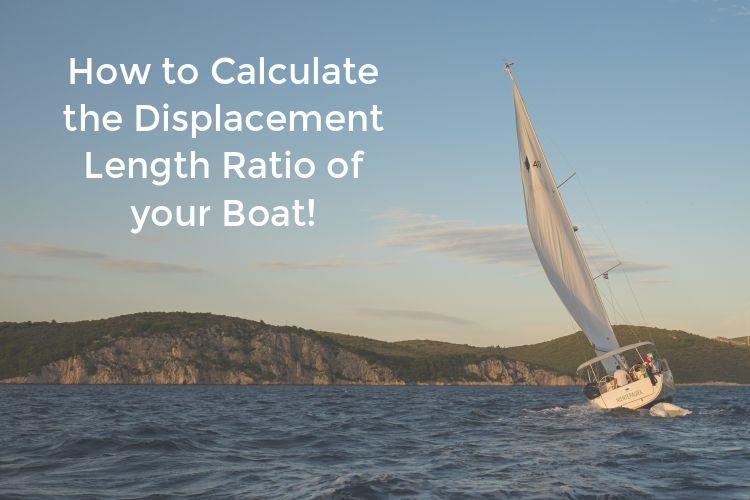How to Calculate the Displacement to Length Ratio of a Boat

How to calculate the displacement to length ratio of your boat!
The displacement to length ratio of a boat is a good comparing parameter for most boats. It is usually referred to sailing boats and it is also seen with the symbol D/L. Basically it shows how heavy the boat is in comparison to the waterline length. The way it is calculated is through a division of the boat’s displacement measured in long tons which is 2.240, by 0.01 of the the waterline length cubed. This is a non dimensional formula because the displacement is measured in volume as cubit feet of water for example, while the length cubed is also measured in volume. As a result, what you get form a formula is a ratio and not a size in any measurement. All in all this parameter makes it possible to compare how heavy boats are in the water, for their given length.
Based on the displacement to length ratio, boats are categorised as ultra-light, light, moderate, heavy and ultra-heavy. Ultralight boats are the ones that reach a ratio of up to 90. The light boats can reach a ratio from 90 to 180. In addition, the moderate boats are categorised from 180 to 270. The heavy boats are the ones with a ratio of 270 to 360 while the ultra-heavy boats are the ones with a ratio of 360 and higher.
The importance of a displacement to length ratio
All the numbers mentioned in the previous paragraph relate to the displacement to length ratio and are used to compare boats in terms of heaviness and speed. What it means is that if a boat is light compared to the waterline length, is able to achieve a higher speed. This comes as a result of wave making drag. Wave making drag is lower if there is less water to be pushed aside. Speed however cannot be measured and compared through the displacement to length ratio alone. The shape of the hull also is an important factor to take into consideration.
In addition, having a small displacement to length ratio does not mean is the best option for a boat. It is just part of the package. As a rule of thumb, a lower displacement to length ratio means that the boat can become less comfortable when it is out in open sea and the sea has heavy waves. In addition, a boat with a small displacement ratio can be overloaded more easily.
All in all, the displacement ratio is an important parameter to keep into consideration when looking for a boat. However it can become misleading when not seen as part of the package, which is why you need to make sure you put the rest of the parameters such as the ballast ratio and the engine power as comparison points. You can use TheBoatDB to make the comparison process easier by simply putting the parameters you are looking into. Contact us for more information!